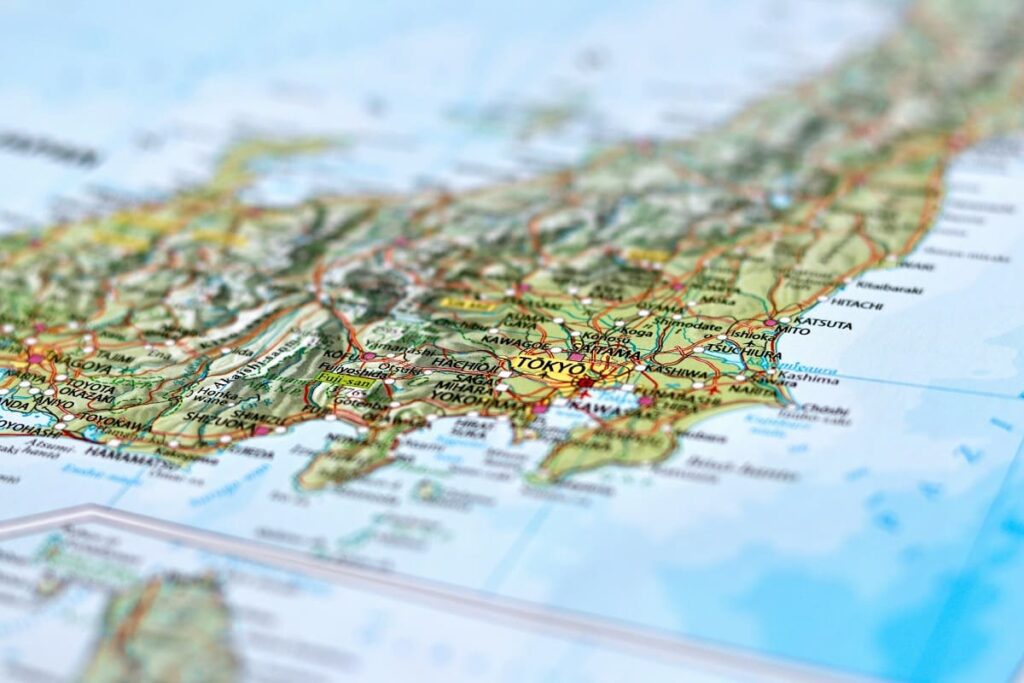Japan is known for its rich culture, delicious food, and beautiful landscapes, but another fascinating aspect of the country is its language—specifically, its dialects. Though the Japanese language is standardized, each region has its own unique way of speaking. These regional variations, called dialects or “hōgen” (方言), often include differences in pronunciation, vocabulary, and even sentence endings.
In this article, we’ll dive into the world of Japanese dialects and explain their unique characteristics. We’ll also introduce you to some fun expressions and vocabulary that will help you understand how diverse the Japanese language can be!
Introduction to Japanese Dialects
Japan’s regions have developed distinct dialects over time due to geographic and historical factors. From the northern island of Hokkaido to the southern islands of Okinawa, people use their own versions of Japanese. While standard Japanese (known as “hyojungo”) is used in formal settings, TV, and education, dialects are alive in daily conversations, giving each region its own flavor.
For someone new to Japanese, the differences might seem subtle at first, but as you spend more time in different areas, you’ll notice that dialects can vary significantly.
What Makes Japanese Dialects Unique?
Japanese dialects don’t just involve a change in accent or tone; they often involve entirely different sentence structures and vocabulary. Here are a few major characteristics of Japanese dialects:
Different Sentence Endings
One of the most noticeable features of Japanese dialects is the variation in sentence endings. In standard Japanese, polite sentences usually end with “です” (desu) or “ます” (masu), but this changes depending on where you are in Japan.
Kansai dialect (Western Japan): You might hear “やで” (yade) instead of “です” (desu).
Tohoku dialect (Northeast Japan): In some areas, the ending “だべ” (dabe) is used, especially in casual conversations.
Hakata dialect (Fukuoka, Southern Japan): Sentences often end with “ばい” (bai) or “たい” (tai), giving the speech a friendly, relaxed feel.
These small changes may seem confusing, but they add charm to the way people communicate in different parts of Japan.
The Influence of Local Culture
Dialect expressions are often shaped by the local culture and history of a region. For example, regions known for farming or fishing might have words that reflect their lifestyle, and those dialects can even give insights into a region’s identity.
In rural areas, dialects are more prevalent, while in big cities like Tokyo, people mostly use standard Japanese. However, even within Tokyo, you might find variations in the way people speak, especially among older generations.
Interesting Japanese Dialects
There are many dialects across Japan, but a few are particularly famous for their distinctiveness.
Kansai Dialect (Kansai-ben)
One of the most well-known dialects is Kansai-ben, spoken in the western part of Japan, including Osaka and Kyoto. Kansai dialect is often associated with humor, as many Japanese comedians come from this region.
Instead of “ありがとう” (arigatou, thank you), people say “おおきに” (ookini).
For “tired,” instead of “つかれた” (tsukareta), they say “しんどい” (shindoi).
Kansai-ben has a warm and friendly tone, and it’s widely loved throughout Japan.
Okinawan Dialect (Okinawa-ben)
Okinawa is the southernmost region of Japan and has its own distinct dialect, influenced by the island’s unique history and culture. One of the most famous Okinawan greetings is:
“はいさい” (haisai) for men and “はいたい” (haitai) for women, both meaning “hello.”
The Okinawan dialect sounds quite different from standard Japanese, reflecting the island’s independent past before becoming part of Japan.
Unique Words and Expressions in Japanese Dialects
Now that we’ve looked at sentence endings and cultural influences, let’s explore how some common words are said differently across Japan.
How to Say “Thank You”(ありがとう Arigatou) in Different Dialects
Expressing gratitude is universal, but in Japan, the way people say “thank you” changes by region.
Kansai/Shikoku region: “おおきに” (ookini)
Nagoya city: “ありがとうさん” (arigatou-san)
Okinawa prefecture: “にふぇーでーびる” (nifee-deebiru)
おおきに!
How to Say “Tired” (疲れた Tsukareta)in Different Dialects
The word “tired” is also expressed differently throughout Japan.
Tohoku region: “つがれだ” (tsugareda)
Hiroshima prefecture: “しんどいけぇ” (shindoi-ke)
Kansai region: “しんどいわ” (shindoi-wa)
しんどいわー。
How to Say “Throw Away” (捨てる Suteru) in Different Dialects
A very basic action like throwing something away also has its own dialect variations.
Kansai region: “ほかす” (hokasu)
Kyushu region/Aomori prefecture: “なげる” (nageru)
Shikoku region:”ほうる” (hooru)
Shizuoka prefecture:”うっちゃる”(Utcharu)
In Kansai, “ほかす” means to discard something, while in Kyushu and Aomori prefecture, “なげる” or “投げる” (literally meaning “to throw”) is used to mean throwing something away, which might surprise those unfamiliar with these regions.
このゴミ、ほかしといて。
How to Say “Hello” (こんにちは Konnichiwa)in Different Dialects
Even simple greetings change from region to region.
Kansai region: “まいど” (maido)
Fukuoka: “こんにちはー” (konnichiwa-)
Okinawa: “はいさい” (haisai) or “はいたい” (haitai)
In Kansai, “まいど” is often used in stores as a friendly greeting to customers.
Fun and Interesting Expressions in Japanese Dialects
Lastly, let’s look at some more unique and fun expressions that are often heard in different regions of Japan.
Hokkaido: “したっけ” (shittakke) – Means “see you later” or “goodbye.”
Okinawa: “かりゆし” (kariyushi) – Means happiness or prosperity, often used in celebrations.
Nagoya: “でら” (dera) – A slang word that means “very” or “extremely,” such as “でらうみゃあ” (dera umyaa), meaning “very delicious.”
These expressions reflect the individuality of each region and the pride people take in their local dialects.
Conclusion
Japanese dialects add a lot of color to the language, and exploring them is like discovering a new layer of Japan’s cultural diversity. Whether you’re just starting to learn Japanese or you’re a seasoned speaker, understanding these dialects can deepen your connection to the country and its people.
方言っておもしろいなあ。

